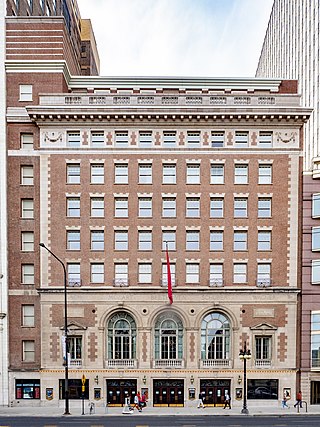
Symphony Center is a music complex located at 220 South Michigan Avenue in the Loop area of Chicago, Illinois. Home to the Chicago Symphony Orchestra; Chicago Symphony Chorus; Civic Orchestra of Chicago; and the Institute for Learning, Access, and Training; Symphony Center includes the 2,522-seat Orchestra Hall, which dates from 1904; Buntrock Hall, a rehearsal and performance space; Grainger Ballroom, an event space overlooking Michigan Avenue and the Art Institute of Chicago; a public multi-story rotunda; Forte restaurant and café; and administrative offices. In June 1993, plans to significantly renovate and expand Orchestra Hall were approved and the $110 million project resulting in Symphony Center, completed in 1997.

The Sunshine Building is a historic six-story building in downtown Albuquerque, New Mexico. It was built in 1924 by local theater owner Joseph Barnett and houses the Sunshine Theater as well as commercial space and offices. The Sunshine operated primarily as a movie theater until the 1980s, though it was also equipped for Vaudeville shows and other live performances. Since 1990 it has operated as a live music venue, hosting many notable acts. The building was listed on the New Mexico State Register of Cultural Properties in 1985 and is also an Albuquerque City Landmark.
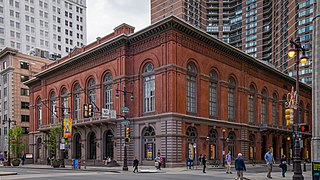
The Academy of Music, also known as American Academy of Music, is a concert hall and opera house located at 240 S. Broad Street in Philadelphia, Pennsylvania. Despite its name, the Academy has never contained a music school. It is located between Locust and Manning Streets in the Avenue of the Arts area of Center City.

A music venue is any location used for a concert or musical performance. Music venues range in size and location, from a small coffeehouse for folk music shows, an outdoor bandshell or bandstand or a concert hall to an indoor sports stadium. Typically, different types of venues host different genres of music. Opera houses, bandshells, and concert halls host classical music performances, whereas public houses ("pubs"), nightclubs, and discothèques offer music in contemporary genres, such as rock, dance, country, and pop.

The Lyric Performing Arts Center is a music venue in Baltimore, Maryland, United States, located close to the University of Baltimore law school. The building was modeled after the Concertgebouw concert hall in Amsterdam, and it was inaugurated on October 31, 1894, with a performance by the Boston Symphony Orchestra and Australian opera singer Nellie Melba as the featured soloist. Beginning in 1904, it was also used for touring performances by the Metropolitan Opera, and from 1950, it was the home of the Baltimore Opera Company until that company's liquidation in 2009.

The Napa Valley Opera House is a theatre in Napa, California, it opened on February 13, 1880, with a production of Gilbert and Sullivan's HMS Pinafore.
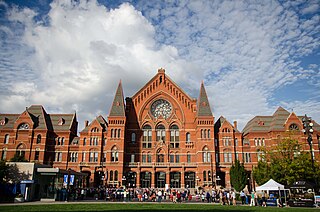
Music Hall, commonly known as Cincinnati Music Hall, is a classical music performance hall in Cincinnati, Ohio, completed in 1878. It serves as the home for the Cincinnati Ballet, Cincinnati Symphony Orchestra, Cincinnati Opera, May Festival Chorus, and the Cincinnati Pops Orchestra. In January 1975, it was recognized as a National Historic Landmark by the U.S. Department of the Interior for its distinctive Venetian Gothic architecture. The building was designed with a dual purpose – to house musical activities in its central auditorium and industrial exhibitions in its side wings. It is located at 1241 Elm Street, across from the historic Washington Park in Over-the-Rhine, minutes from the center of the downtown area.

The Tulsa Theater is a theater and convention hall located in Tulsa, Oklahoma. It was originally completed in 1914 and remodeled in 1930 and 1952. The building was used as a detention center during the 1921 Tulsa race massacre. It is listed on the National Register of Historic Places and remains in use as a theater today. The theater was previously named after W. Tate Brady but was renamed in 2019 due to Brady's affiliation with the Ku Klux Klan.

The Maryland Theatre is a music and entertainment venue located in the Arts and Entertainment District of downtown Hagerstown, Maryland. It was built in 1915, partially destroyed by fire in 1974, reopened in 1978, and expanded into a full performing arts complex in 2019. The theatre's seating capacity is 1,279 people, and it hosts performances of symphony orchestras, country artists, comedians, children's shows, pop stars, recitals, stage shows, and others. Over 81,000 patrons attended performances at the Maryland Theatre in 2005, making it one of Maryland's premier venues for the performing arts. The Maryland Symphony Orchestra performs there regularly and has been headquartered in the building since 2019. The theater features a fully restored Wurlitzer theatre organ.

The Victoria Theatre is a historic 1,154-seat performing arts venue located in downtown Dayton, Ohio. The Victoria hosts a variety of events including theatre, music, dance, film, and comedy.

The Music Hall Center for the Performing Arts is a 1,731-seat theatre located in the city's theatre district at 350 Madison Street in Downtown Detroit, Michigan. It was built in 1928 as the Wilson Theatre, designated a Michigan State Historic Site in 1976, and was listed on the National Register of Historic Places in 1977.

The Grand Theatre is part of a complex of historic buildings in Salem, Oregon, United States that was originally owned by the fraternal organization Independent Order of Odd Fellows, and listed on the National Register of Historic Places (NRHP) as the Chemeketa Lodge No. 1, Odd Fellows Buildings. The theater building is also known as the I.O.O.F. Temple.

The Ramsdell Theatre is a historic playhouse theater building and opera house at 101 Maple Street in downtown Manistee, Michigan. The building was financed by local businessman and politician Thomas Jefferson Ramsdell and was built in 1902. It replaced the town's two previous opera houses which had been destroyed by fire, one in 1882 and the other in 1900. Besides producing plays the facility was later used as a movie theater. James Earl Jones started his acting career at the theater as an actor and stage manager.
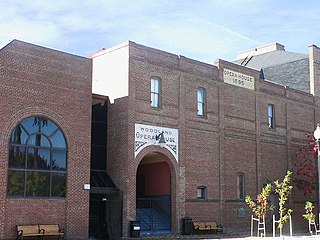
The Woodland Opera House, listed on the National Register of Historic Places and a California Historical Landmark, is one of four fully functioning 19th century opera houses in California. It is a contributing property to the Downtown Historic District of Woodland, California.
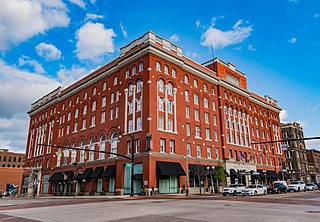
The Great Southern Hotel & Theatre is an historic hotel and theater building in Downtown Columbus, Ohio. The building currently operates as the Westin Great Southern Columbus and the Southern Theatre.

The Martha Ellen Auditorium, now the State Theatre, was built 1916 in Central City, the county seat of Merrick County in the state of Nebraska in the midwestern United States. It is listed in the National Register of Historic Places, as a well-preserved example of a Nebraska opera house.
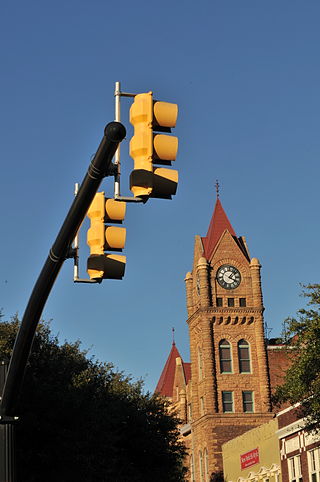
Sumter Town Hall-Opera House, also known as the Sumter Academy of Music, is a historic town hall building located at Sumter, Sumter County, South Carolina. It was built in 1893, and is a four-story, ashlar brick Richardsonian Romanesque style building. It features a four-faced clock tower that serves as a focal point for the entire area. The building was remodeled internally in 1936, converting the first floor into a movie theater and the second floor opera house into offices.
The Corning Opera House is a theater located in Corning, Iowa, United States. This was the third of three opera houses built in town. The other two were built in the 1880s, and this one was completed in 1902. It was the only opera house in Corning by 1907, and it served as a theater until 1934. From its opening in 1902 until 1921 it staged theatrical performances, and from about 1920 to 1931 it showed movies. It also staged vaudeville performances and high school productions. The theater was located on the second floor. It features the original raked stage, seating on the main floor and the original horseshoe-shaped balcony, and it has a small stage and backstage offers a make up room and 2 green rooms. Historically, Commercial space was located on the main floor of the building, now the first floor features a conference room for renting and a commercial kitchen.
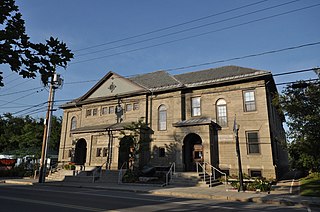
Chandler Music Hall is a historic performance venue in Randolph, Vermont.
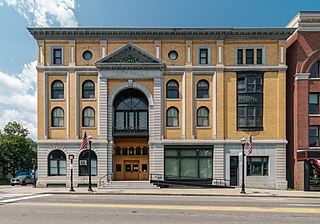
Barre City Hall and Opera House is a historic government building at 6 North Main Street in downtown Barre, Vermont. Built in 1899, it houses the city offices, and its upper floors have served for much of the time since its construction as a performing arts venue. The building was listed on the National Register of Historic Places in 1973.























